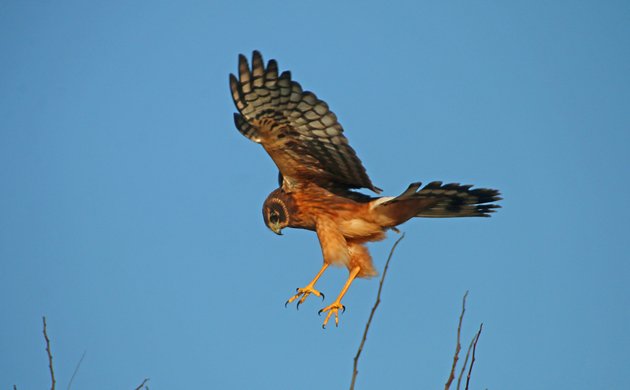
Most birders in the northern hemisphere are familiar with the Marsh Hawk, an expected denizen of marshes, tundra, and grasslands across a huge swathe of the globe. Otherwise known as the Northern Harrier (in the Americas) or the Hen Harrier (in the English-speaking Old World), Circus cyaneus brings terror to voles and other small mammals as it courses low over open country, ready to plunge, talons-first, at the first sign of movement. Though movement is not the only way the harrier finds its prey: its owl-like facial disc allows for pretty precise pinpointing of prey by sound.
The easiest field marks for the harrier are its bright white rump; long, wide wings; and short tail. Its low and often seemingly effortless flight – wings often held in a dihedral – help identify the Northern Harrier as well. Here in New York we have breeding harriers along the coast and in open country upstate but we get more in migration and quite a few wintering wherever there is habitat to support them.
Northern Harrier coming in for a landing
On Sunday morning I was working my way through a flock of sparrows at Edgemere Landfill in Queens, one of my favorite birding locales. The light was behind me, the birds were active, and it was a perfect set up for me to get some digiscoped shots using my car as a blind. But then the sparrows scattered and this harrier came in for a landing on the twiggy branches at the crest of the hill. Never one to look a gift harrier in the mouth, I got to work digiscoping it.
Northern Harrier
This certainly beat digiscoping sparrows! It was an entertaining five minutes or so watching the harrier try to find a perch that would hold its weight that also didn’t have other sticks poking the bird. It would land and take off, land and take off, land and take off.
I’m really happy I got this shot of the harrier’s head through its wing as it looked straight down at another landing spot.
Yes, this is the same image as the one at the top of the post. But this one can be clicked on for a bigger version, well worth it to see those talons better!
Yes, the harrier did manage to land several times, but each time something was wrong with the spot. Here, its wing is caught up on a stick.
Its clumsiness seemed to make it ashamed…
And, finally, it flew off, hopefully to successfully find something to eat.
…


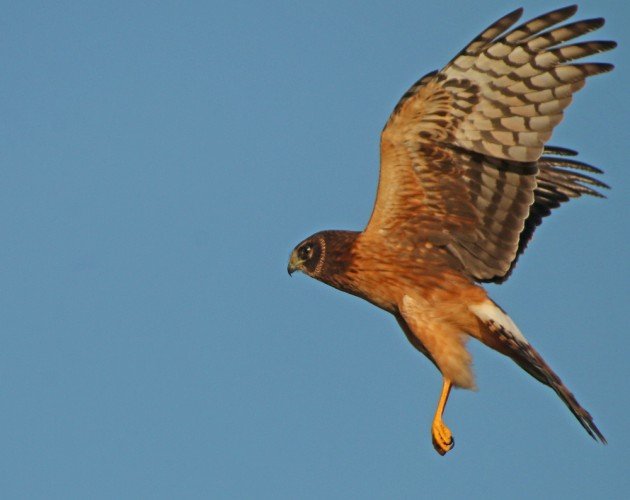
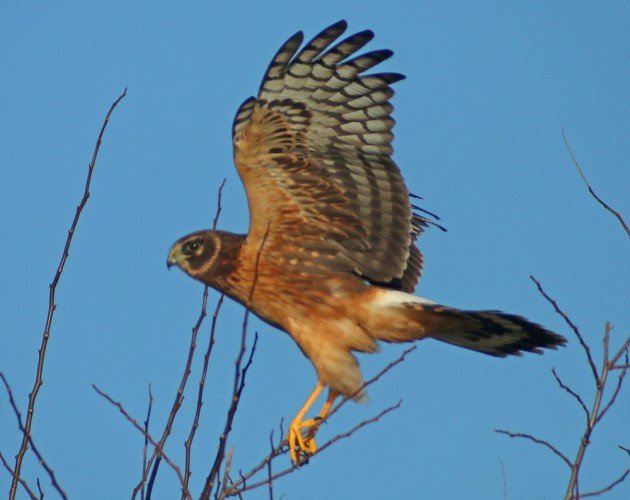
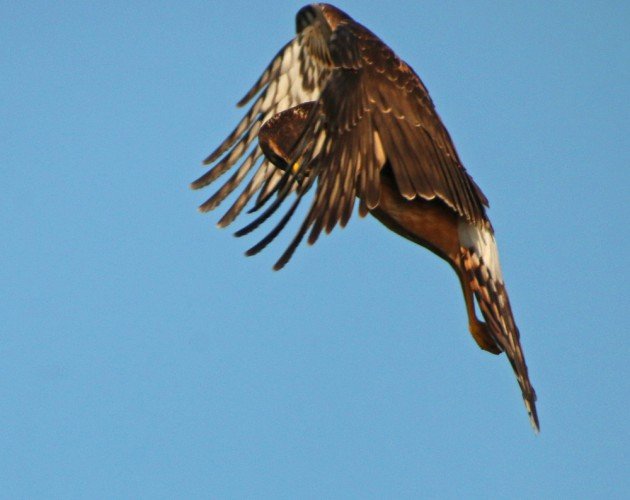
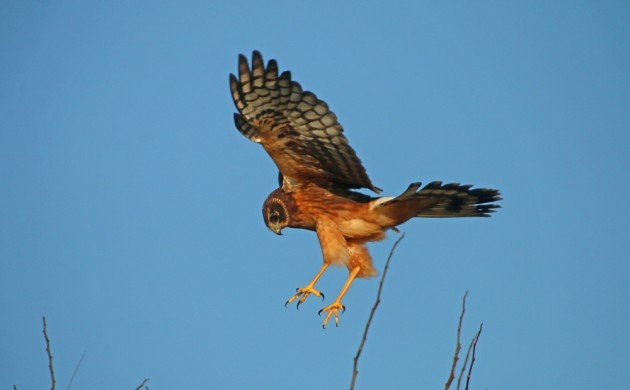
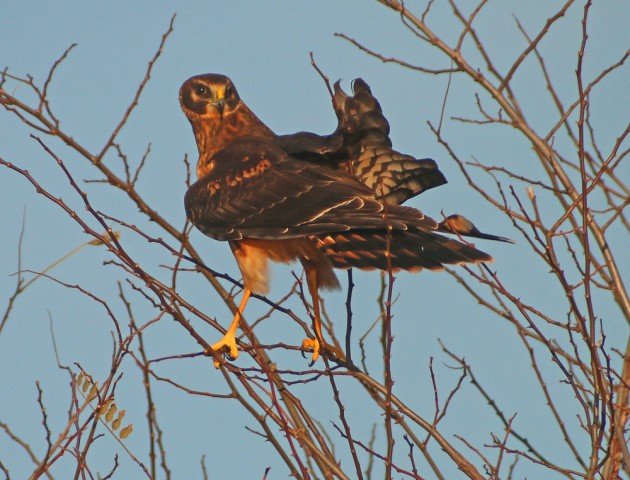
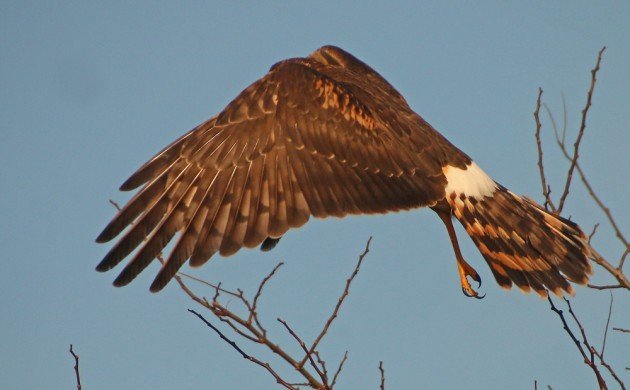
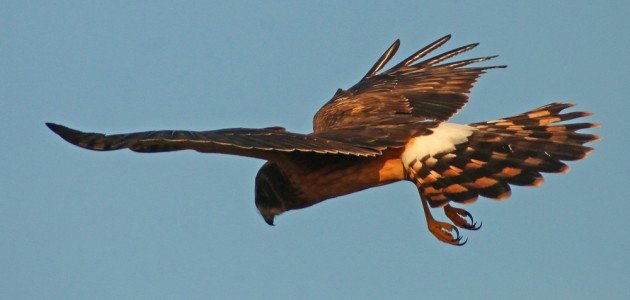



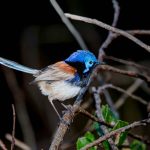
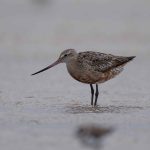
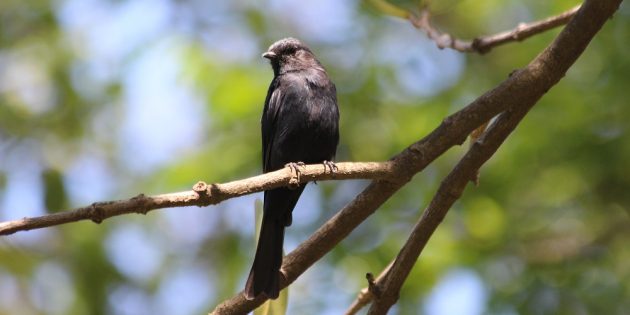

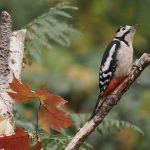
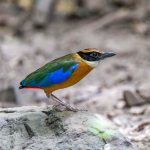
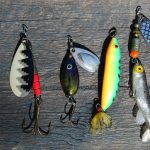
In Europe, hybrids between Pallid and Hen Harriers can strongly resemble Northern Harriers. Since these might conceivably occur as vagrants in North America, you have to exclude these hybrids in every encounter with a “ringtail” in North America or you cannot be seen as a reliable observer. Right?
🙂
Thanks for those useful pictures. I am always on the look-out for a hudsonicus here in Germany, but so far to no avail. Mind you, I did find a very likely hybrid Hen x Pallid once, but “close” doesn’t a cigar make.
We also have this bird around our home. We live in Guilderland. NEW york.